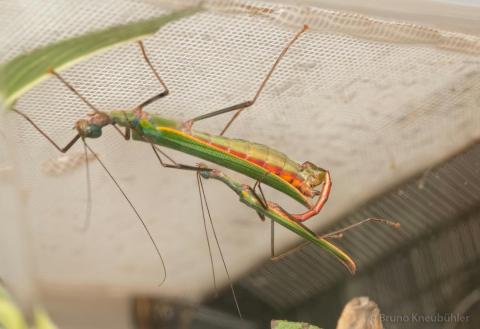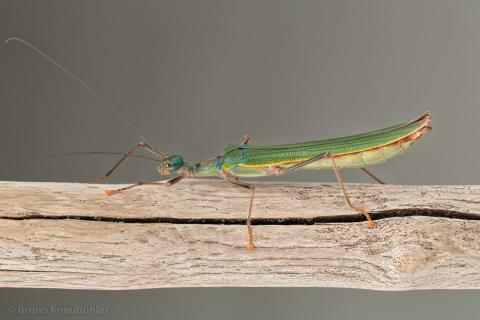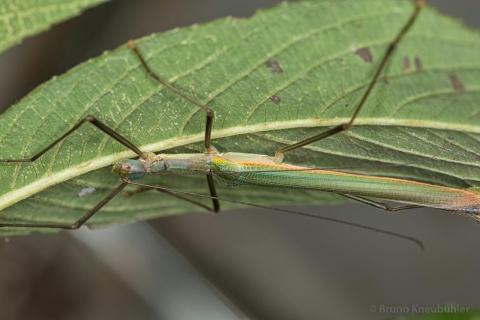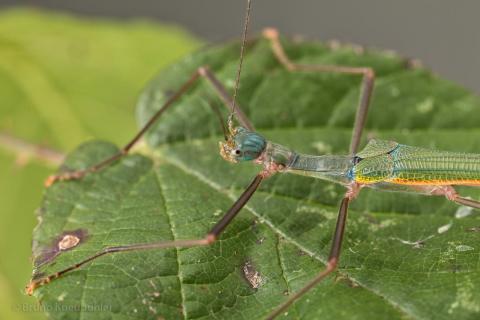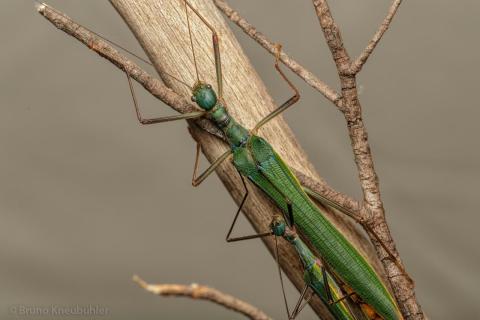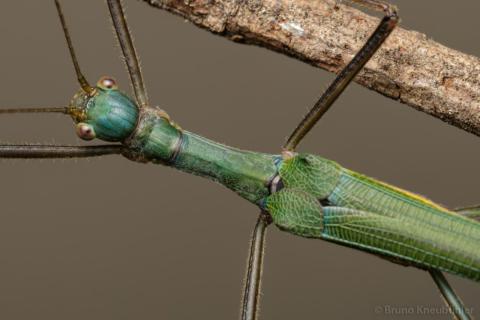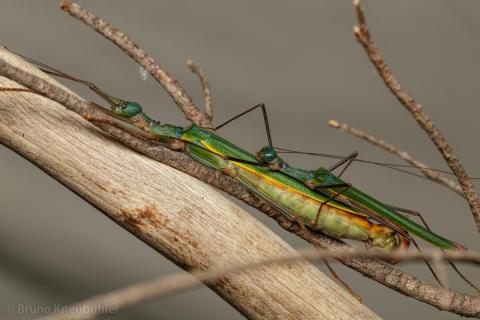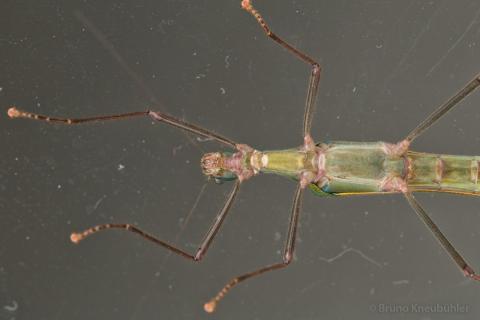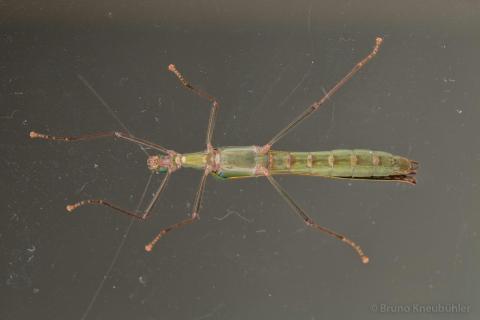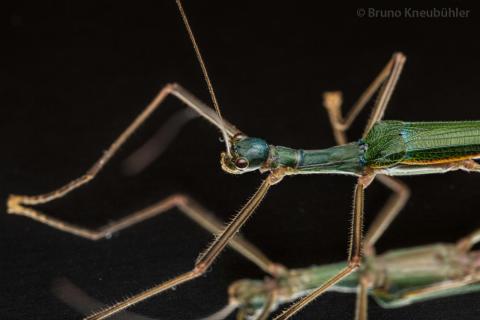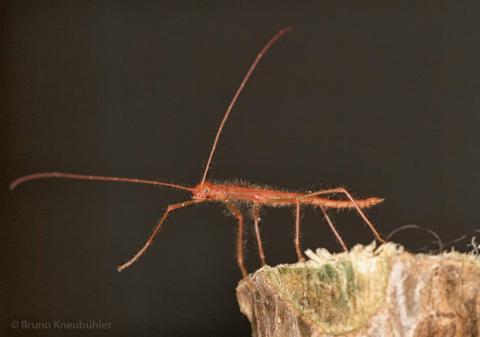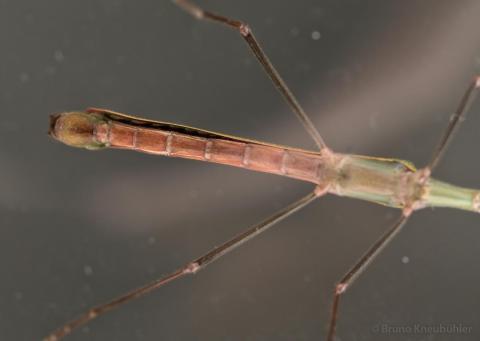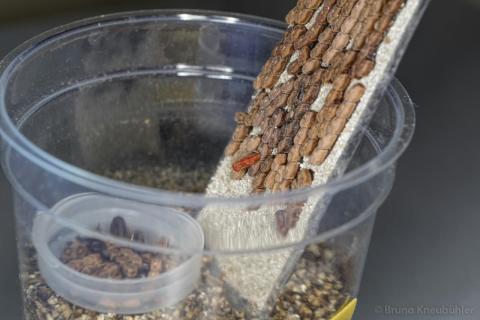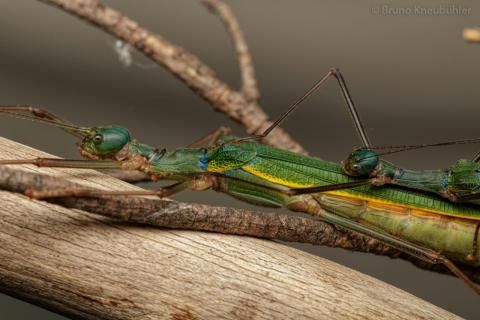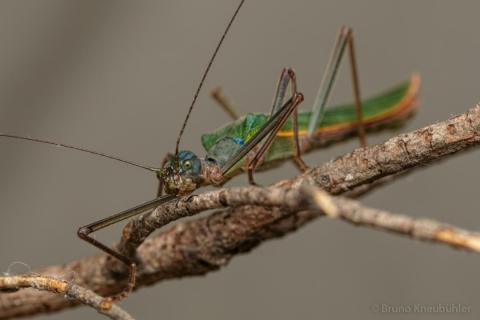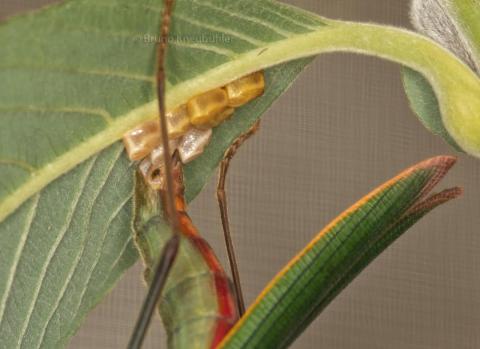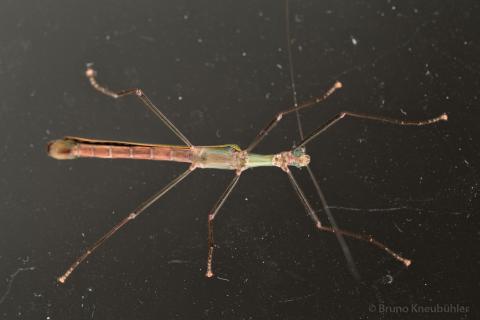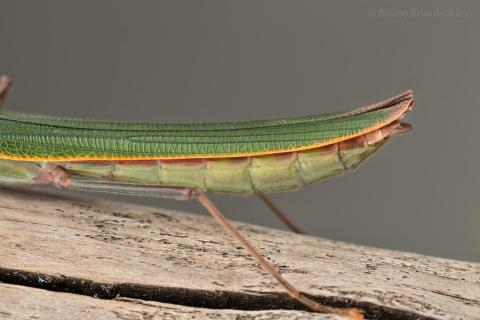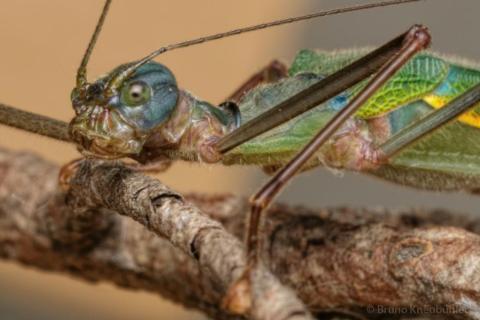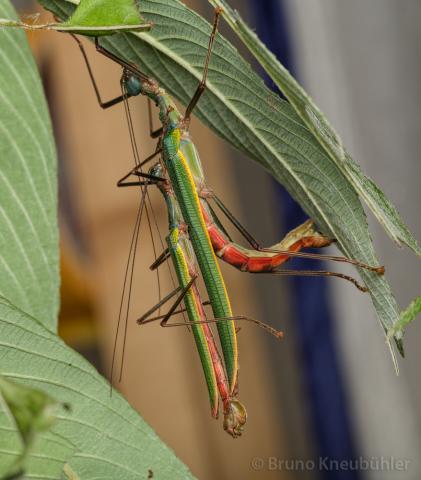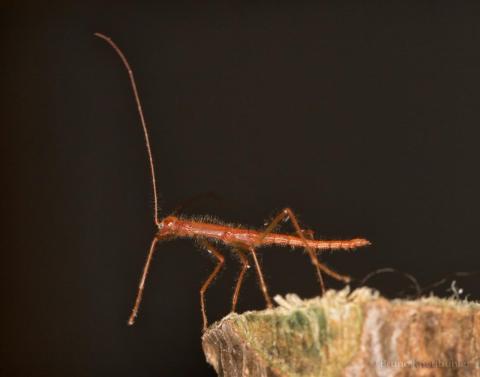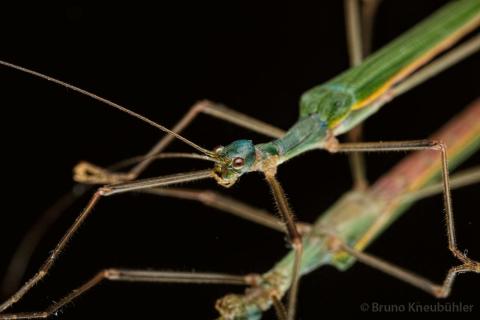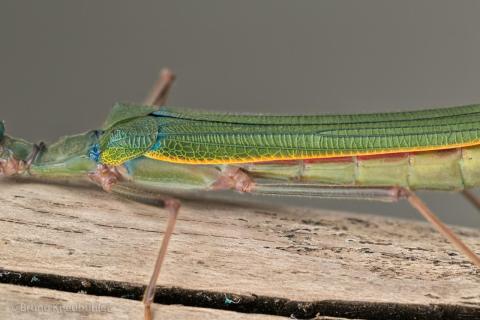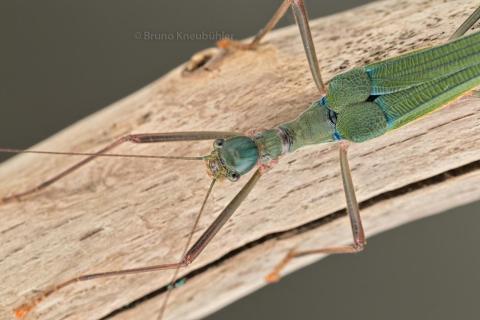
Genus
Species
Stock
CLP
620
Culture status
Unknown
Foodplants
Beech (Fagus sylvatica)
Salix sp.
Arachis hypogaea
Breeding notes
Calvisia leopoldi "Pankung Jae"
(by Bruno Kneubuehler)
General Informations
- provenience: near Pakung Jae (south slopes of hills about 25 km north of Negara, Jembrana, western Bali)
- ID by Frank Hennemann (DE)
- F1 CB culture in 2013 by Bruno Kneubuehler (CH)
- further taxonomical informations ➤ Phasmida Species Files
- this is a pure culture, and serious breeders are requested to avoid mixing this culture with similar populations from a different provenience. When spreading this culture to other breeders, then always use the full name with provenience
- this culture has the number CLP 620 (Online Phasma Culture List)
Females
- small, colorful, winged phasmids
- body length ≈ 6 cm
- female coloration does not vary
- mainly green with blue and yellow areas
- abdomen under the wings is brightly orange
- membranous part of hindwings is black
Males
- slim, small, colorful phasmids
- body length ≈ 4.5 cm
- male coloration does not vary
- coloration very similar to the females
Nymphs
- freshly hatched nymphs are red and look quite hairy
- by L4 it is quite easy to distinguish between male and female nymphs
- on how to distinguish between male and female nymphs
Eggs
- 3.5 x 2 mm
- brown, matt
Food Plants
- beech (Fagus sylvatica)
well accepted by nymphs and adults - use the apple-slice-trick for freshly hatched nymphs, until they have started to feed well
- one can also use an apple-coating on the beech (Fagus sylvatica) leaves to coax freshly hatched nymphs to start feeding
- unidentified willow (maybe Salix triandra ?)
well accepted by older nymphs and adults - this culture has been collected very close to a peanut plantation, thus peanut (Arachis hypogaea) might even be another food plant
Breeding, Behaviour
- easy to breed, if their food plant is availabl
- active mainly during the night, but adult males are active during the day sometimes
- usually they behave very frantic when being touched and handled
- a defensive spray has been observed
- eggs are glued to twigs, leaves, side of the cage but never to the ground
- a clutch per female every 2 weeks
- about 5 - 10 eggs per clutch
- GET method for a natural incubation of glued eggs
- incubation about 3 months at 20 - 24 °C
- incubation time can be extended with the LTD-Method (up to at least 3 months), as their food plant (beech) is not available during european winter time
- eggs of this species are not prone to get mouldy, especially not when incubated with the GET-method
- nymphs hatch during daytime (early morning)
- it is quite common that some phasmid nymphs hatch weeks after the first nymphs - from the same batch of eggs
- a humidity of about 65 - 75 % rH seems to be good enough for nymphs and adults
- one can spray them regularly with chlorine-free water, but allow the water to dry up before spraying again
- small nymphs can be kept in a Faunabox (or a similar cage), which shall not be too small
- provide a cage of about 30 x 30 x 30 (cm, L x B x H) for 3 - 4 adult couples
- males will be adult after 3 months (at 20 - 24°C), females after 3.5 - 4 months
Basics of phasmids breeding
- keep only one species per cage, overpopulation is one of the main reasons for breeding failures
- keep nymphs seperate from the adults, mainly to protect them during the crucial moulting phases
- choose the cage big enough. When in doubt, too big is (usually) better than too small
- a ventilator often supports good breeding results, as it seems to increase activity and feeding
- provide enough light, but avoid direct sunlight (overheating)
- try to keep day time temperatures below 25°C
- a nocturnal fall of temperature is very natural (down to around 20°C)
- do not spray too much, phasmids are no fish ! Allow the water to dry up before you spray again
- minimize disturbances (loud music, commotions, light at or during the night, opening up cages in the morning [often a moulting phase] ect.)
Useful informations
➤detailed infos on how to breed phasmids
www.phasmatodea.com/web/guest/199
➤
infos on newly cultured phasmid species
https://www.facebook.com/phasmatodea
➤
how to recognize the difference between male / female nymphs
www.phasmatodea.com/web/guest/tips-and-tricks
➤
eggs for breeding
http://www.phasmatodea.com/web/guest/222
